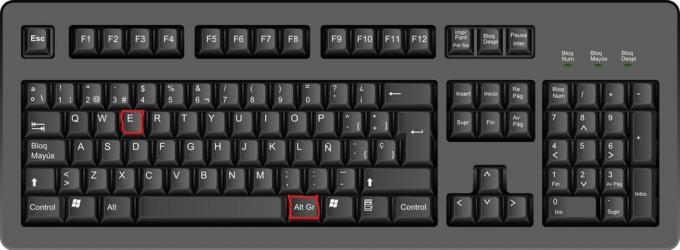The flags symbolically represent the sovereignty of the nations of the world, reflecting their respective origins, values, history, among other particular characteristics.
As one of the most important symbols of sovereign states, flags must be strictly respected. Therefore, each country determines, by law, all the details of the official protocol that governs how the flag must be handled.
Flags of South American countries
Below are the flags of all the countries that make up the South American continent.
Brazil's flag
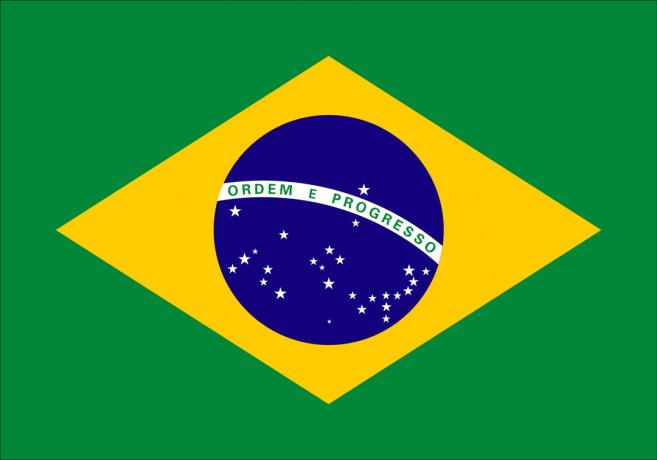
- Capital of Brazil: Brasilia
- Predominant language: Portuguese
- Coin: Real
- Territorial area: 8,515,767.049 km²
The Brazilian flag has four official colors: green, yellow, blue and white. In the white strip in the center of the flag is the phrase "Ordem e Progresso", a quote based on the positivist ideals of the French philosopher Augusto Comte.
Learn more about Brazil's flag.
Chile flag
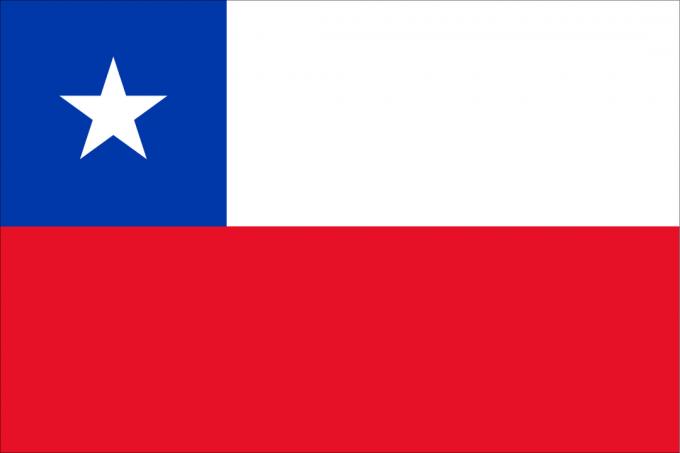
- Capital of Chile: Santiago
- Predominant language: Spanish
- Coin: Chilean Peso
- Territorial area: 756,950 km²
White, red and blue are the official colors of the Chilean flag, which also has a white star on the blue part, known as La Estrella Solitaria.
Many people confuse the Chilean flag with the Texan (state belonging to the United States). In addition to the tone of the colors of both, another notable difference is the extension of the vertical blue band on the Texas flag.
Learn more about Chile flag
flag of argentina
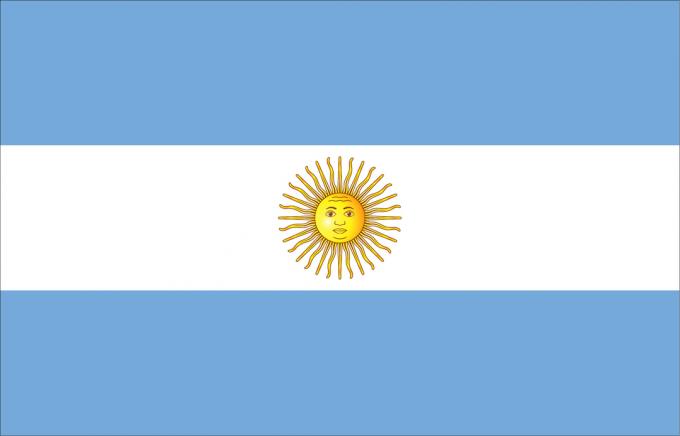
- Capital of Argentina: Buenos Aires
- Predominant language: Spanish
- Coin: Argentinian peso
- Territorial area: 2,780,400 km²
It is formed by three horizontal bands, the first and last being sky blue, and the central white. In the center of the flag is the symbol of the Sun of May, a direct reference to May Revolution (1810), which marked the beginning of the country's independence.
Learn more about Argentina flag.
Uruguay Flag
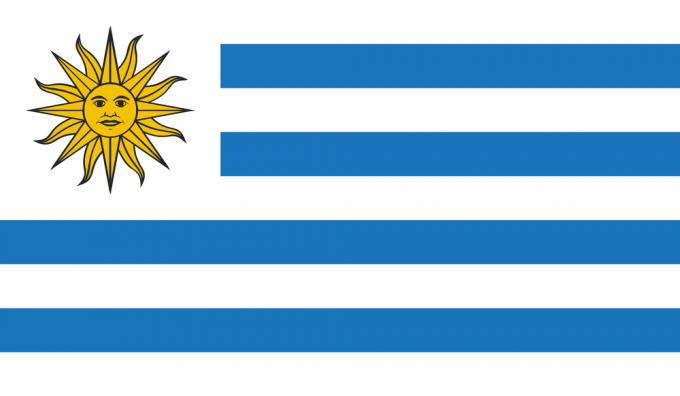
- Capital of Uruguay: Montevideo
- Predominant language: Spanish
- Coin: Uruguayan Peso
- Territorial area: 176.215 km2
The flag of Uruguay is made up of 9 horizontal stripes in blue and white. These stripes represent the 9 departments existing in the country at the time of its independence. In the upper left corner is a representation of the Inca sun, a reference to the May Revolution.
know more about Uruguay flag.
Flag of Venezuela
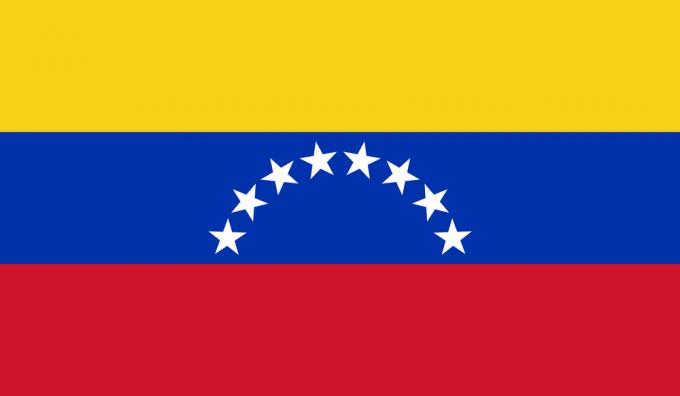
- Capital of Venezuela: Caracas
- Predominant language: Spanish
- Coin: bolivar
- Territorial area: 916,445 km2
The flag of Venezuela is made up of yellow, blue and red colors and 8 white stars in the center. The stars represent the 7 provinces of the country at the time of independence and the last star is a tribute to the Simon Bolivar, who fought for the country's independence.
know more about Venezuela flag.
Colombia flag
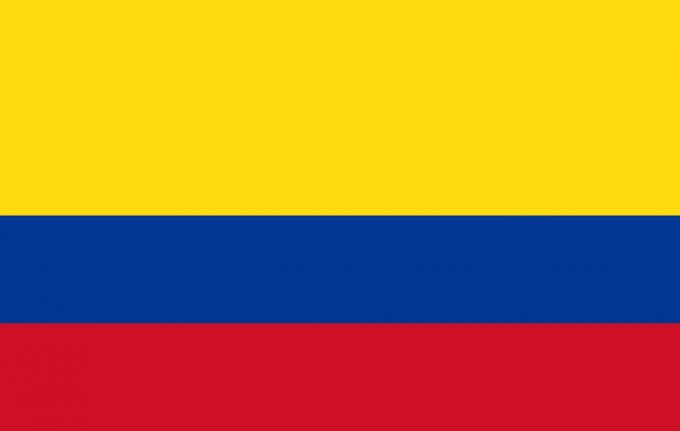
- Capital of Colombia: Bogota
- Predominant language: Spanish
- Coin: Colombian peso
- Territorial area: 1,138,914 km2
The Colombian flag is made up of three stripes: yellow, blue and red. Yellow symbolizes gold and natural wealth, blue represents the Pacific Ocean and the Ocean Atlantic, which bathes the country, and the red color symbolizes the blood of those who fought for independence from the country.
Learn more about Colombia flag.
Flags of North American countries
United states's flag
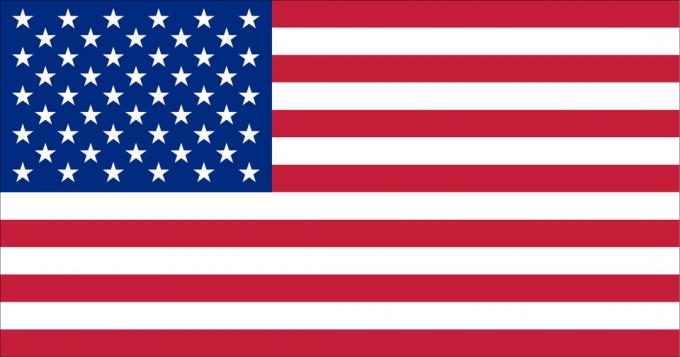
- United States capital: Washington, DC
- Predominant language: English
- Coin: Dollar
- Territorial area: 9,371,175 km²
The stars seen on the United States flag represent each of the 50 states that make up the country. The horizontal stripes (red and white) symbolize the 13 English colonies that gave rise to this nation.
The American flag is popularly known as The Stars and Stripes or old glory.
Learn more about United states's flag.
Mexican flag
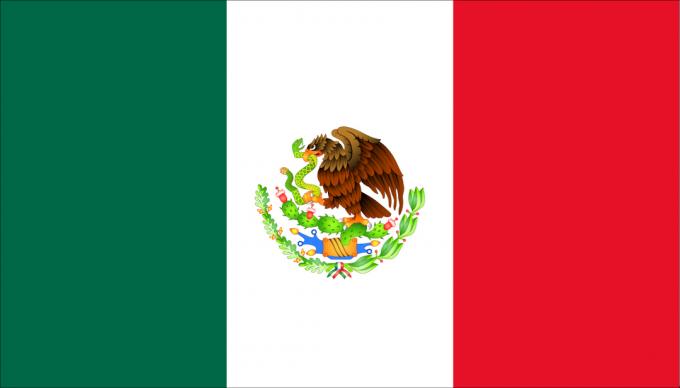
- Capital of Mexico: Mexico City
- Predominant language: Spanish
- Coin: Mexican peso
- Territorial area: 1,958,201 km²
It is composed of green, white and red colors, which fill three vertical bands of the same size. At the center of the Mexican flag is the country's official coat of arms, represented by an eagle under a cactus and carrying a snake in its beak.
Learn more about Mexican flag.
Canada flag
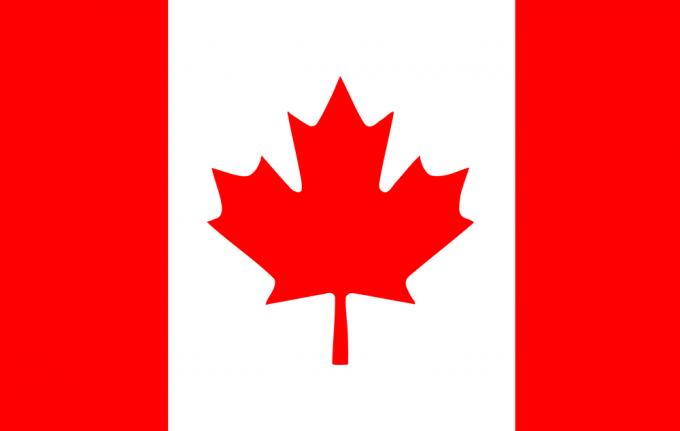
- Canada's capital: Ottawa
- Predominant language: English and French
- Coin: Canadian dollar
- Territorial area: 9,984,670 km2
The flag of Canada has two vertical red lines and one white, where a representation of the board leaf. Symbol of the country, these leaves gain special beauty in autumn, when they turn red.
Learn more about Canada flag.
Flags of Central American countries
Costa Rica Flag
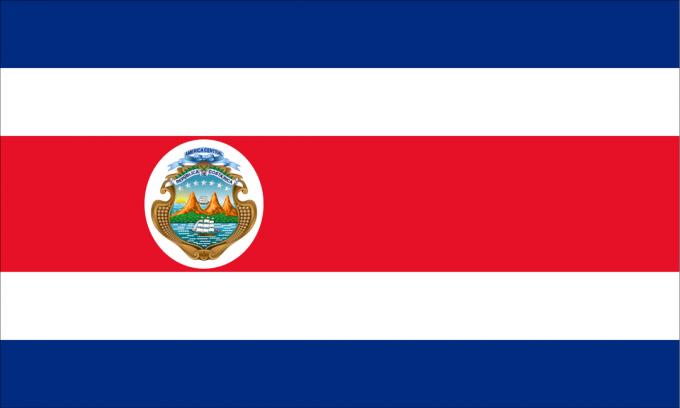
- Capital of Costa Rica: San José
- Predominant language: Spanish
- Coin: Costa Rican colon
- Territorial area: 51,100 km²
With five horizontal stripes, the Costa Rican flag has three official colors: blue, white and red.
In the center, on the left side, is the Costa Rita coat of arms, which symbolizes the history of struggles and wars that the country has faced in favor of its sovereignty over the years.
Learn more about Costa Rica flag.
Jamaica flag
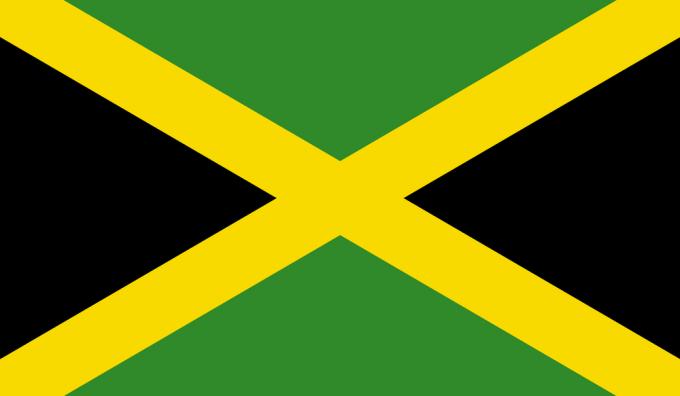
- Capital of Jamaica: Kingston
- Predominant language: English
- Coin: Jamaican dollar
- Territorial area: 10,991 km2
The flag of Jamaica is made up of two intersecting green triangles, two black triangles and two yellow stripes. Used since 1962, this flag holds a curiosity: it is the only flag in the world that does not have the colors blue, red or white.
Learn more about Jamaica flag.
Flags of European countries
Netherlands flag
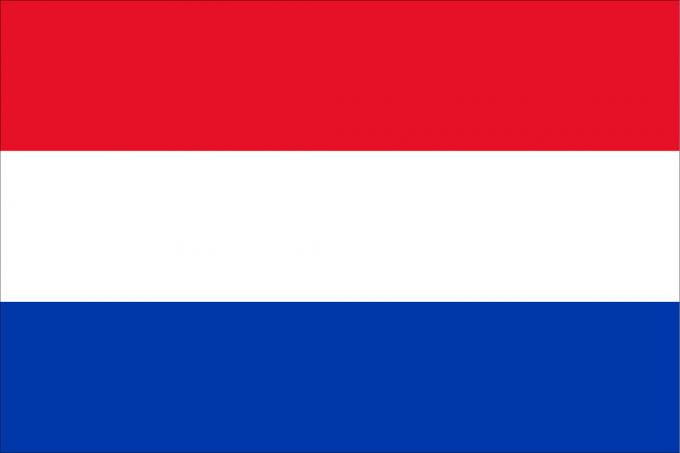
- Capital of the Netherlands: Amsterdam
- Predominant language: dutch / dutch
- Coin: Euro
- Territorial area: 41,528 km²
It is the oldest tricolor flag still in use in the world. It is configured by three horizontal bands. The official colors of the Dutch flag are: red, white and cobalt blue.
The colors currently used on the Dutch flag are an homage to Prince William I of Orange, as blue, white and red are heraldic colors from his royal house, the Orange-Nassau.
Learn more about Netherlands flag.
Germany's flag
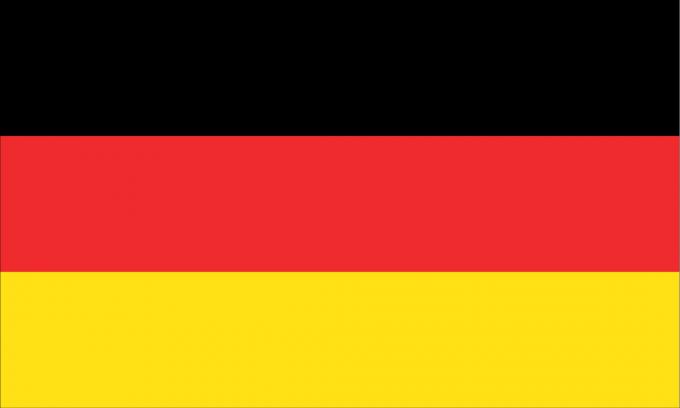
- Capital of Germany: Berlin
- Predominant language: German
- Coin: Euro
- Territorial area: 357,051 km²
The German flag is formed by three horizontal stripes in black (top), red (middle) and golden yellow (bottom).
Unlike the interpretation observed in the flags of most countries, where each color has a meaning, the colors of the flag of Germany together symbolize the ideals of freedom and democracy.
Learn more about Germany's flag.
Italian flag
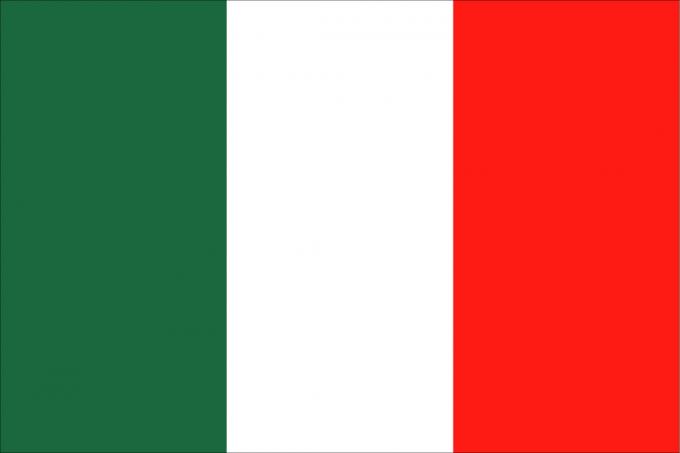
- Capital of Italy: Pomegranate
- Predominant language: Italian
- Coin: Euro
- Territorial area: 301,338 km²
Formed by three vertical bands with colors: green (left), white (center) and red (right).
There are different interpretations for the meaning of the colors of the Italian flag, one being attributed to the point of religious view for having a massive influence of the Catholic Church and a more philosophical one (defended by the historians).
Learn more about Italian flag.
France flag
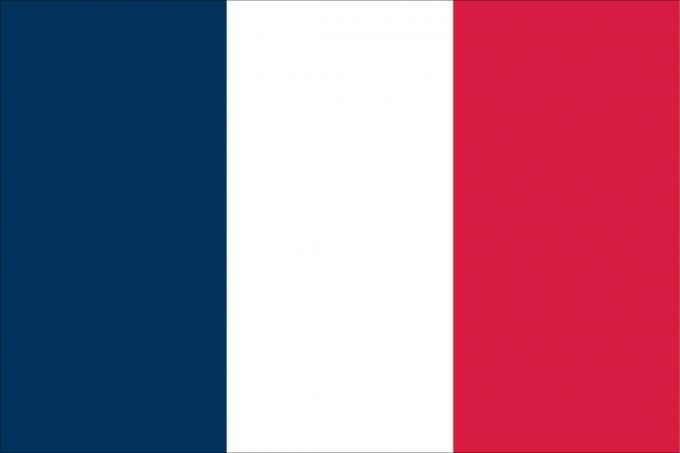
- Capital of France: Paris
- Predominant language: French
- Coin: Euro
- Territorial area: 543,965 km²
The French flag is formed by three vertical bands of equal size. Its official colors are: blue (left lane), white (central lane), and red (right lane).
The ideas of the French Revolution are the basis for interpreting the French flag, with each color associated with one of the principles of the movement: Freedom (blue), Equality (White and Fraternity (Red).
Learn more about France flag.
England's flag
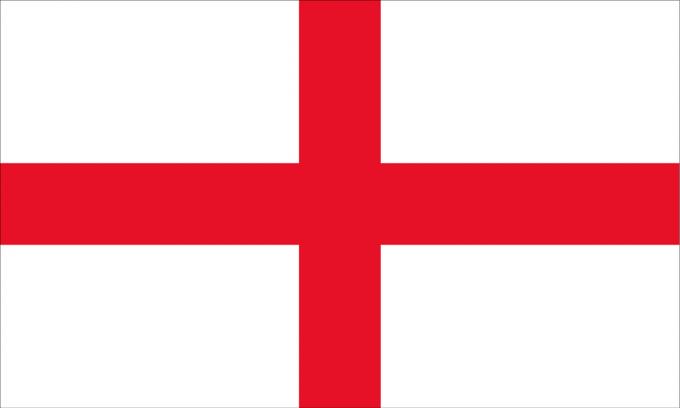
- England's capital: London
- Predominant language: English
- Coin: pound sterling
- Territorial area: 130,395 km²
The English flag is represented by a red cross on a white background. This symbol is a reference to São Jorge, considered the country's patron saint.
Therefore, the flag of England is also popularly known as "St. George's Flag" or "St. George's Cross".
Learn more about England's flag.
flag of greece
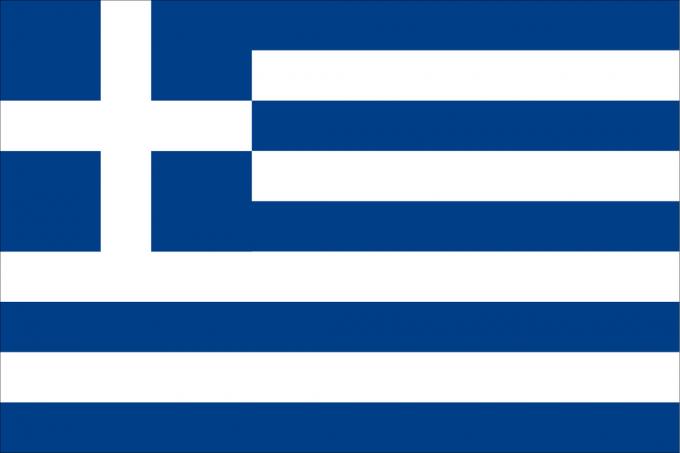
- Capital of Greece: Athens
- Predominant language: Greek
- Coin: Euro
- Territorial area: 131,990 km²
The Greek flag is visually formed by joining different patterns of lines, predominantly nine horizontal stripes in blue and white. In the upper right corner of the flag is a blue square with a white cross in the center.
The colors of the flag refer to the country's natural elements, while the white cross in the upper corner symbolizes the presence of the traditional Orthodox Catholic Church in Greece.
Learn more about flag of greece.
Croatia Flag
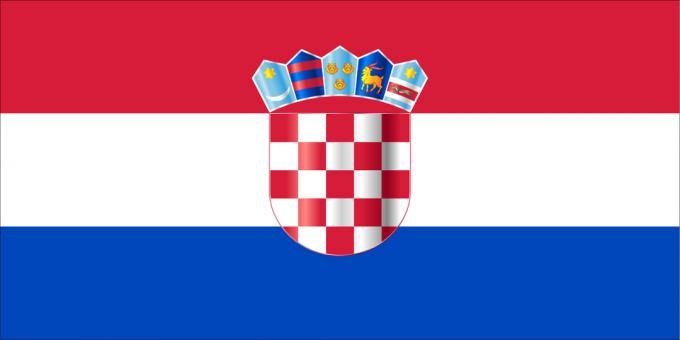
- Capital of Croatia: Zagreb
- Predominant language: Croatian language
- Coin: Croatian Kuna
- Territorial area: 56,542 km²
Formed by three horizontal stripes in colors: red (top), white (center) and blue (bottom). At the center of the Croatian flag is the country's official crest, a representation of the people of that nation.
All colors present on the Croatian flag are part of the movement to unite the Slav peoples (Pan-Slavic colors), which began in the 20th century.
Learn more about Croatia flag.
Spanish flag
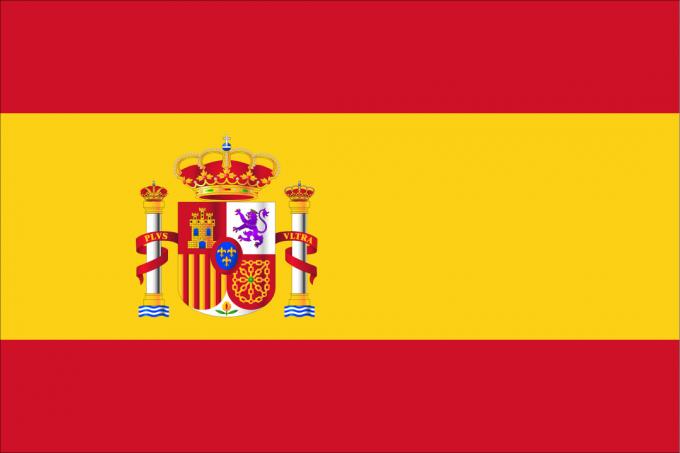
- Capital of Spain: Madrid
- Predominant language: Spanish
- Coin: Euro
- Territorial area: 504,030 km²
The Spanish flag is bicolor, consisting of three horizontal bands in red (top and base) and yellow (center).
In the central part of the flag is also the coat of arms of the country, representing the different autonomous regions that make up Spain.
Learn more about Spanish flag.
Russian flag

- Capital of Russia: Moscow
- Predominant language: Russian
- Coin: Ruble
- Territorial area: 17,124,442 km2
The Russian flag was used for the first time in 1705 and is composed of white, blue and red. During the Russian Revolution, the country's flag became red, with the design of a sickle and hammer. In 1991, with the end of the Union of Soviet Socialist Republics, the tricolor flag was used again.
Learn more about Russian flag.
Flag of Portugal
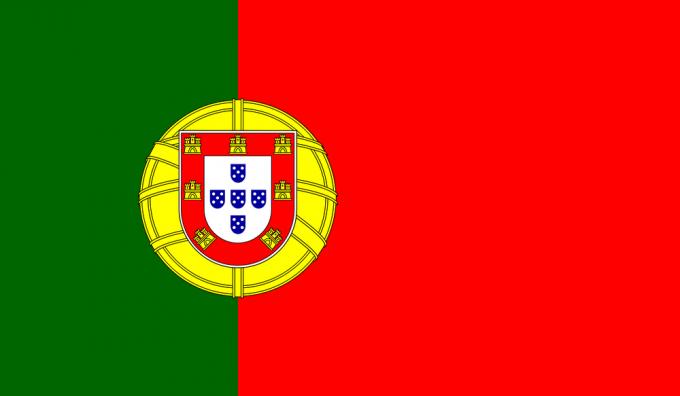
- Capital of Portugal: Lisbon
- Predominant language: Portuguese
- Coin: Euro
- Territorial area: 92,256 km2
The flag of Portugal is divided into two unequal parts, the smaller of which is green and the larger red. Between the two bands is the coat of arms of the country formed by the armillary sphere and the Portuguese shield.
Learn more about Portugal flag.
Flags of Asian countries
flag of china
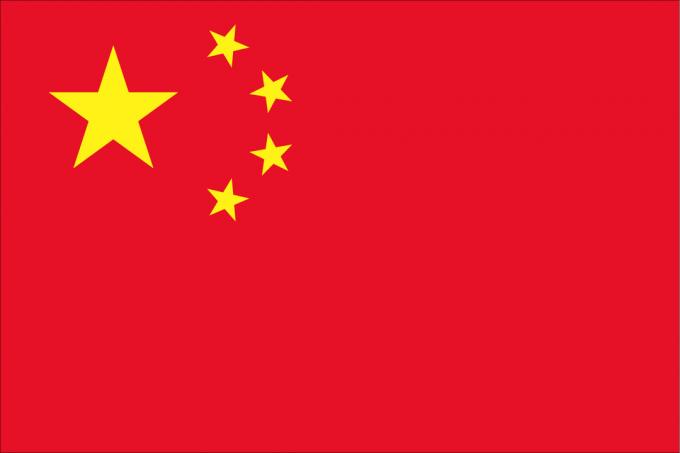
- Capital of China: Beijing
- Predominant language: mandarin
- Coin: Renminbi (Yuan)
- Territorial area: 9,596,961 km²
The flag of China has a completely red background, with five yellow stars arranged in the upper right corner, one of which is larger than the others.
The Chinese flag is a representation of the ideas of the communist movement. The yellow color of the stars signifies the brightness of the sunlit Chinese soil, while the biggest star (highlighted) would be the Communist Party (CCP).
Learn more about flag of china.
flag of japan
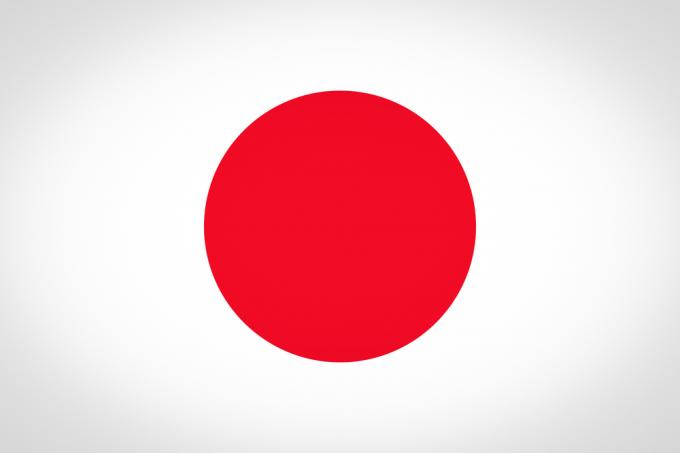
- Capital of Japan: Tokyo
- Predominant language: Japanese
- Coin: Yen
- Territorial area: 377,873 km2
The flag of Japan, called the Hinomaru, is white with a crimson circle in the center. the circle represents Amasterasu, the goddess of the sun according to Japanese mythology. Despite its use since the 19th century, this flag was only made official in the country in 1999.
Learn more about japan flag.
Flags of the countries of Oceania
australia flag
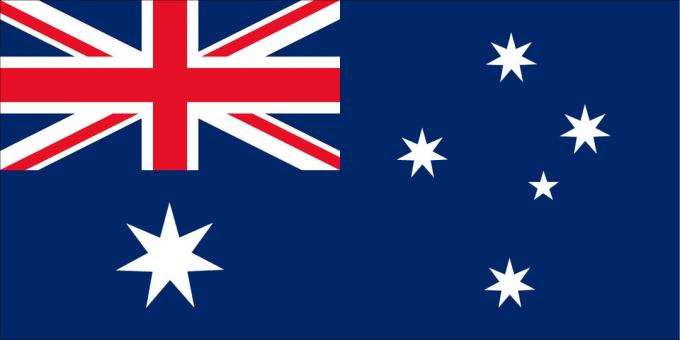
- Australia's capital: Canberra
- Predominant language: English
- Coin: Australian Dollar
- Territorial area: 7,692,024 km²
Three colors predominate: blue, red and white. The Australian flag can be divided into three parts: the representation of the Southern Cross constellation (right side); The union jack, name given to the flag of the United Kingdom (top left corner); and a great white seven-pointed star (Star of the Federation).
Learn more about australia flag.

